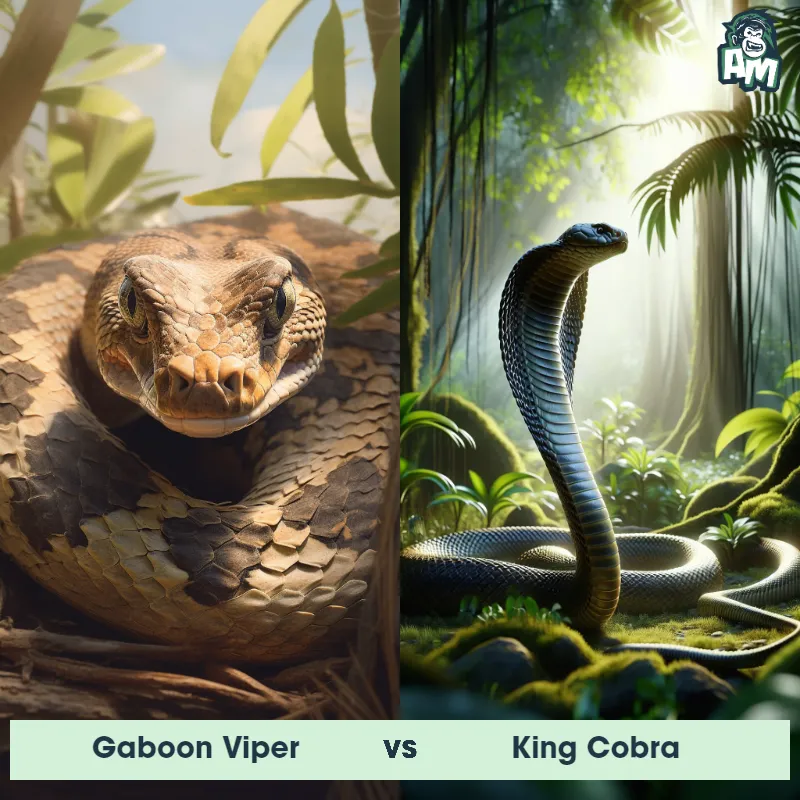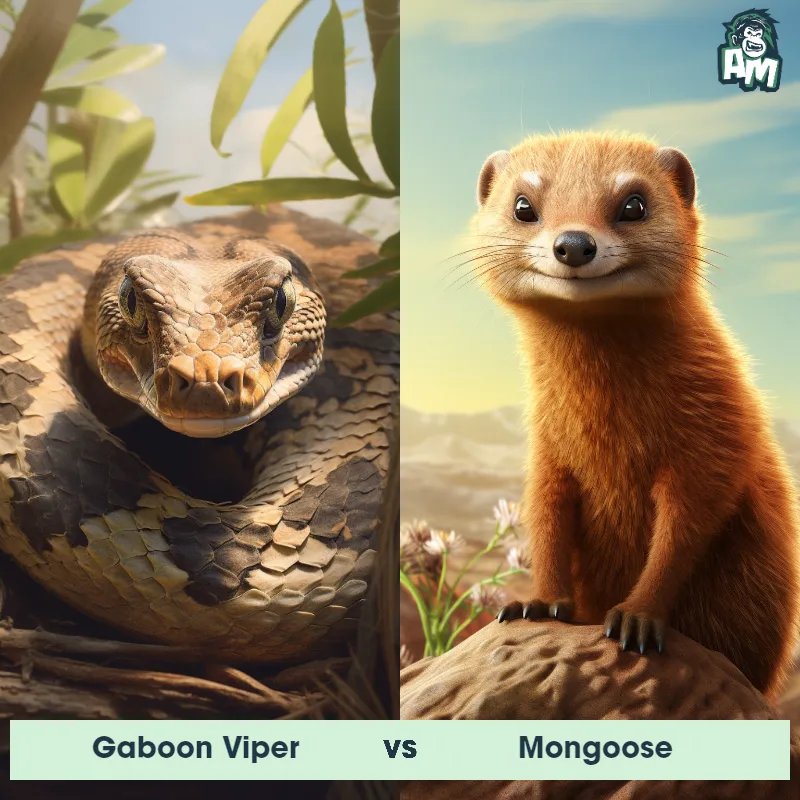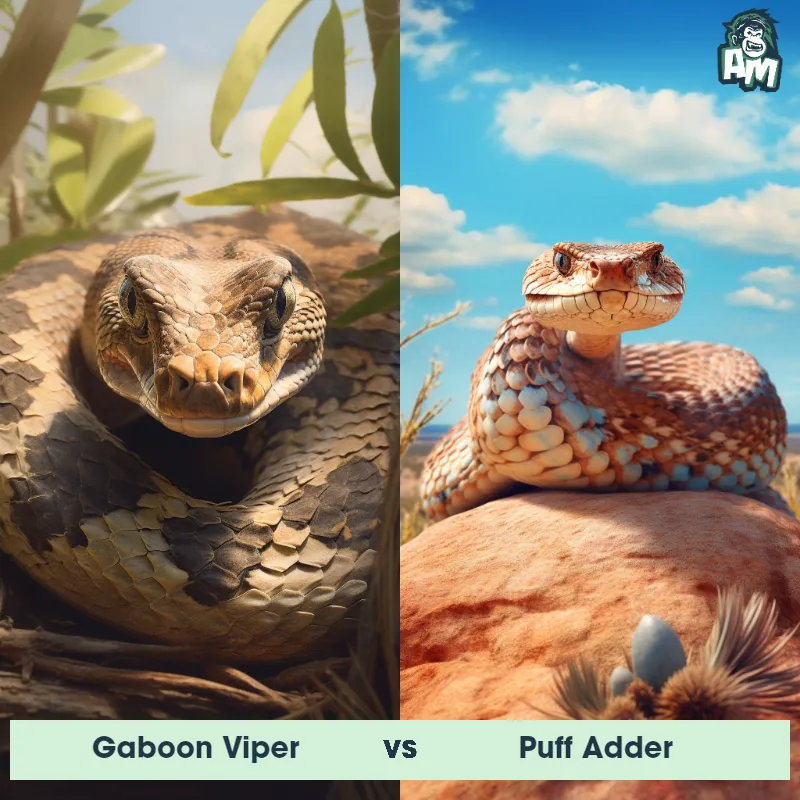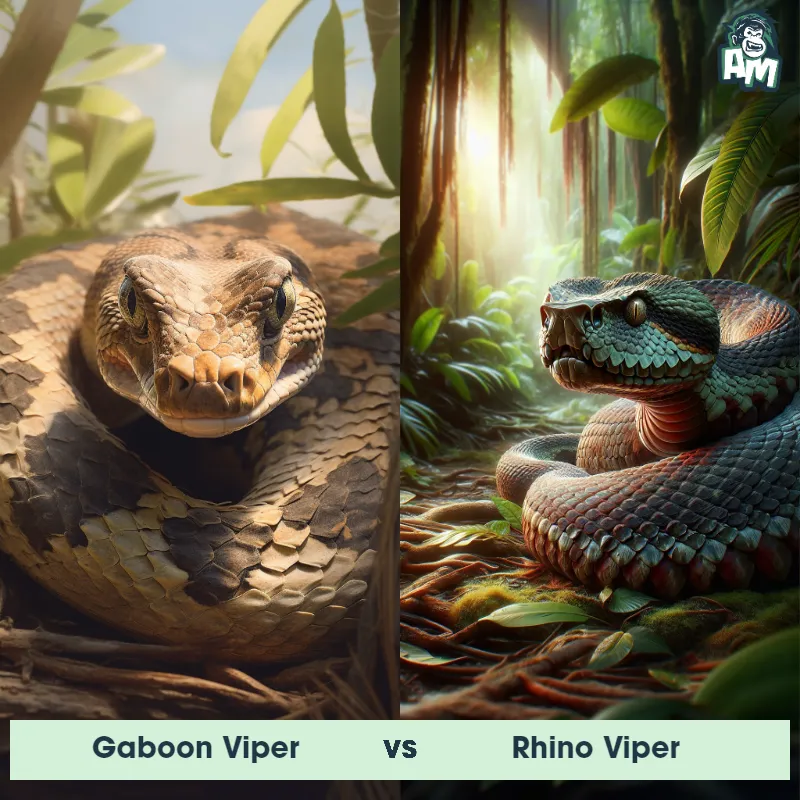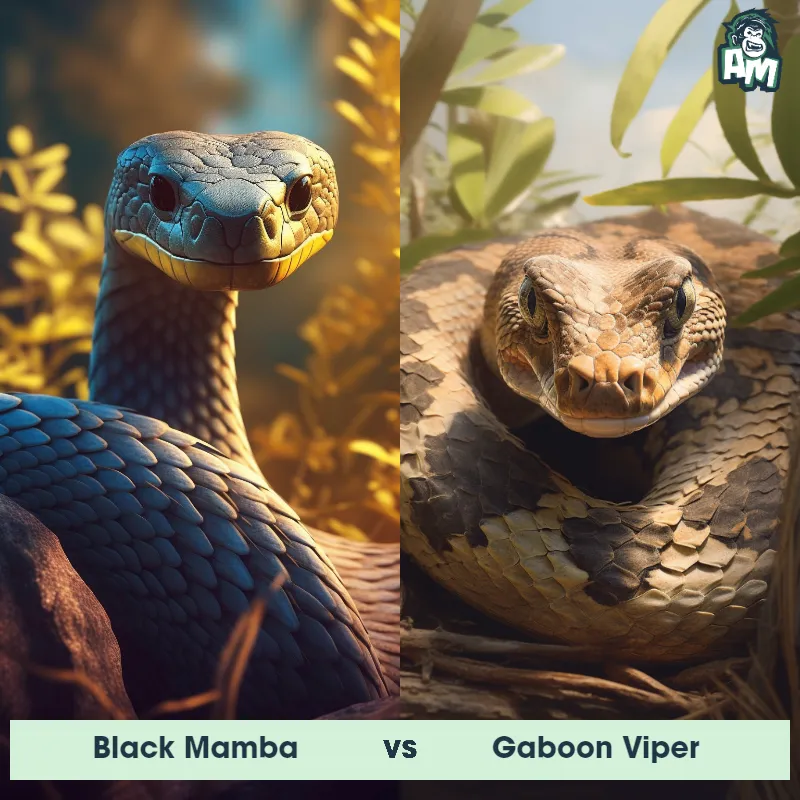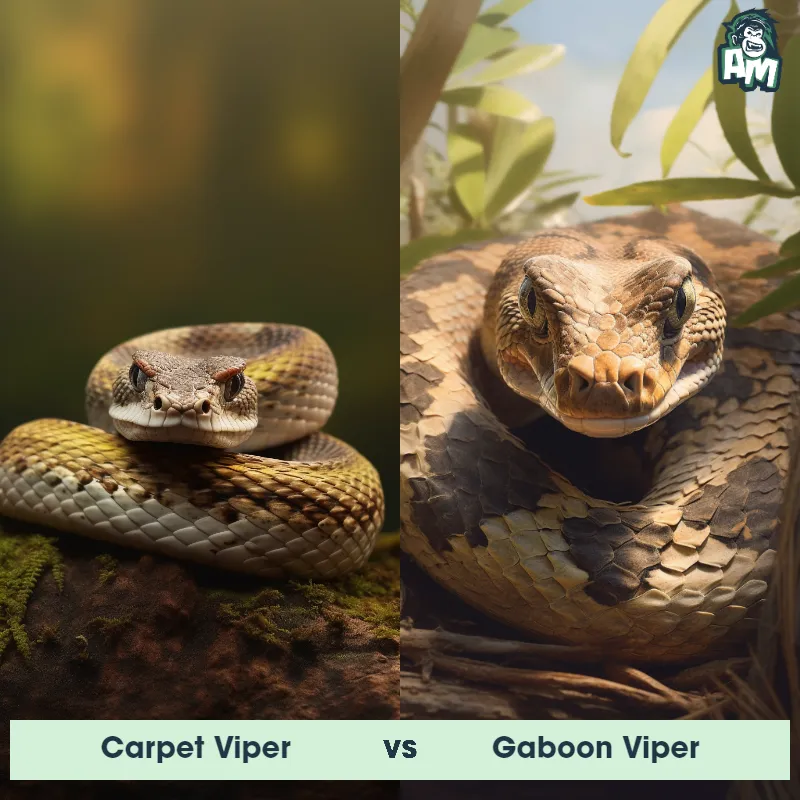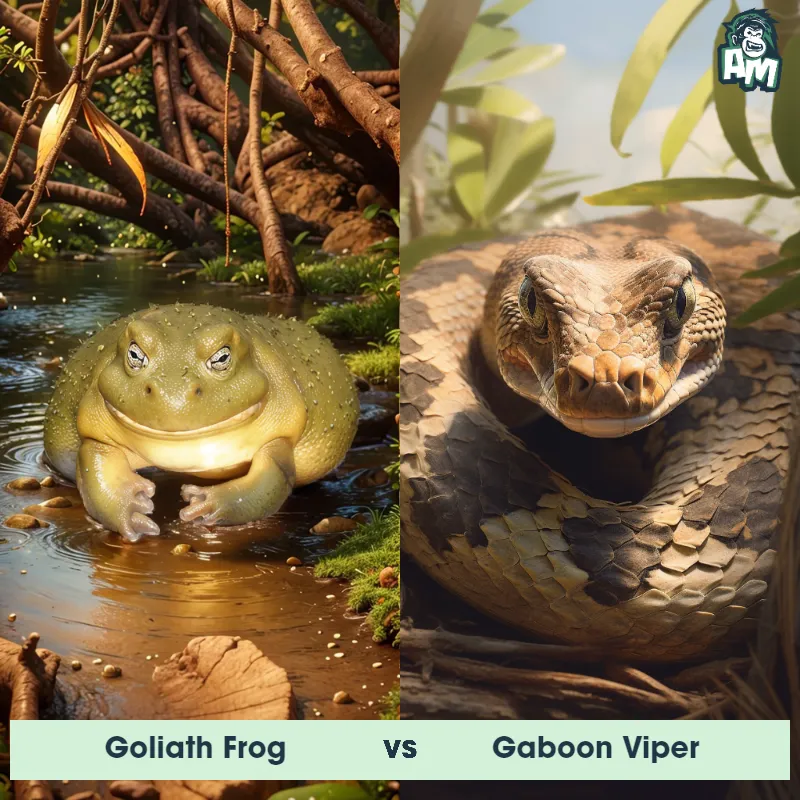The Gaboon Viper
The Gaboon Viper, also known as Bitis gabonica, is a venomous snake native to the rainforests and savannas of sub-Saharan Africa. It is one of the largest vipers in the world, growing up to 6 feet long. The Gaboon Viper is known for its distinctive triangular-shaped head and large fangs that can reach up to 2 inches in length. Its body is covered in a beautiful pattern of dark brown or black blotches on a lighter background, providing excellent camouflage in its natural habitat. This snake is known for its ambush hunting style, lying in wait for unsuspecting prey to come within striking range.
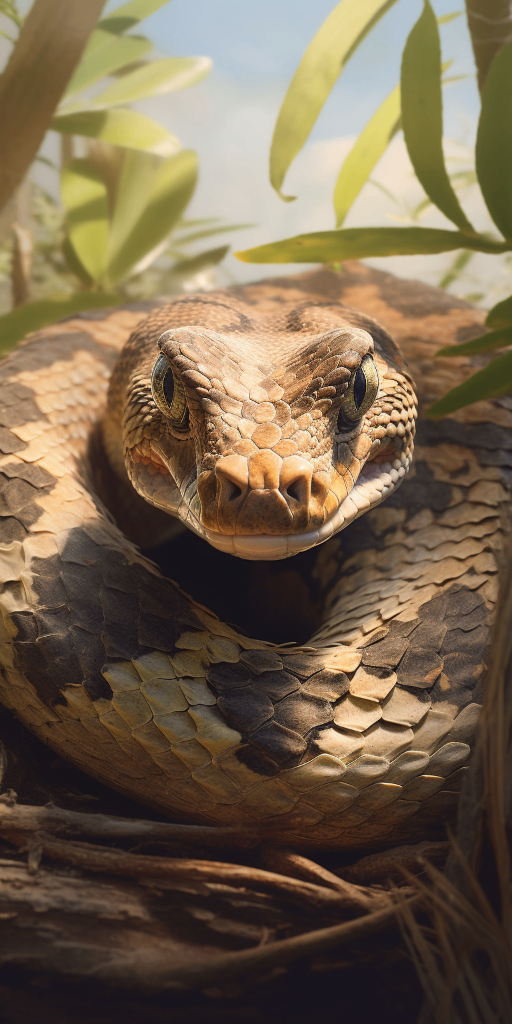
| Gaboon Viper | |
|---|---|
| Size | Up to 6 feet (1.8 meters) |
| Weight | Up to 20 pounds (9 kilograms) |
| Speed | NA |
| Key Strength | Venomous bite |
| Biggest Weakness | Slow movement |
| Scientific Name | Bitis gabonica |
| Family | Viperidae |
| Habitat | Rainforests |
| Geography | Central and Western Africa |
| Diet | Small mammals, birds, and reptiles |
| Lifespan | 20 years - 25 years |

The Gaboon Viper
The Gaboon Viper, also known as Bitis gabonica, is a venomous snake native to the rainforests and savannas of sub-Saharan Africa. It is one of the largest vipers in the world, growing up to 6 feet long. The Gaboon Viper is known for its distinctive triangular-shaped head and large fangs that can reach up to 2 inches in length. Its body is covered in a beautiful pattern of dark brown or black blotches on a lighter background, providing excellent camouflage in its natural habitat. This snake is known for its ambush hunting style, lying in wait for unsuspecting prey to come within striking range.
Fun Fact: The Gaboon Viper has the longest fangs of any snake species, measuring up to 2 inches in length, allowing it to deliver a deep and potentially lethal bite.
| Gaboon Viper | |
|---|---|
| Size | Up to 6 feet (1.8 meters) |
| Weight | Up to 20 pounds (9 kilograms) |
| Speed | NA |
| Key Strength | Venomous bite |
| Biggest Weakness | Slow movement |
| Scientific Name | Bitis gabonica |
| Family | Viperidae |
| Habitat | Rainforests |
| Geography | Central and Western Africa |
| Diet | Small mammals, birds, and reptiles |
| Lifespan | 20 years - 25 years |
Gaboon Viper Matchups
We use AI to simulate matchups between the Gaboon Viper and other animals. Our simulation considers size, strength, and natural predatory behaviors to determine the most likely outcome.
Gaboon Viper: Diet, Predators, Aggression, and Defensive Behaviors
What do Gaboon Vipers eat?
Gaboon Vipers primarily feed on small mammals such as rodents, birds, and amphibians. They are ambush predators, patiently waiting for their prey to come within striking distance before delivering a quick and lethal bite with their potent venom.
Do Gaboon Vipers have any predators?
As adults, Gaboon Vipers have very few natural predators due to their size, potent venom, and cryptic coloration that helps them blend into their surroundings. However, young Gaboon Vipers may fall victim to larger predators such as birds of prey, mongoose, and other snakes.
Are Gaboon Vipers aggressive?
Gaboon Vipers are generally not considered aggressive snakes. They rely on their camouflage and defensive behavior to avoid confrontation with potential threats. When provoked, they may display a threat posture, hiss, and strike if they feel threatened or cornered.
Do Gaboon Vipers fight?
Gaboon Vipers are solitary animals and do not engage in fights with other snakes unless it is for mating purposes. During the breeding season, male Gaboon Vipers may compete for the attention of a female by engaging in ritualized combat where they entwine their bodies and try to push each other to establish dominance.
How do Gaboon Vipers defend themselves?
Gaboon Vipers have several defense mechanisms to protect themselves from potential threats. They rely on their camouflage to avoid detection, but if they feel threatened, they will hiss loudly, display their fangs, and adopt a striking position as a warning. If harassed further, they will not hesitate to strike and inject their potent venom.
What is the Gaboon Viper's biggest weakness in a fight?
Despite their impressive size, potent venom, and intimidating appearance, Gaboon Vipers have a relatively slow strike speed compared to other venomous snakes. This slower strike speed could potentially be a weakness if they are confronted by a faster and more agile predator or prey in a fight.
Fun Fact: Despite its size and potent venom, the Gaboon Viper is generally a docile and non-aggressive species of snake, relying on its excellent camouflage and stealth to catch its prey, rather than actively pursuing it.
Fun Fact: The Gaboon Viper has the ability to discharge venom in a controlled manner, known as "venom metering," which allows it to conserve its venom for future use and avoid wasting it on small prey, making it an even more efficient predator.



